Wireless split
Hii! Do you not want to get carpal tunnel? Or just think that split keyboard are cool? Then you are in the right place!
In this guide you will be learning how to make a wireless split keyboard
This guide is meant to be an extension to the hackpad guide, so if you are a total beginner to keyboards/electronics read that first, and then come back here :)
In this tutorial we a going to use the same form factor board as in the hackpad tutorial, but with different internals, instead of a rp2040 it has a nrf52840 chip inside, which has wireless capabilities.
Installing Libraries
After you created the kicad project, we need to install some libraries. We will be installing the same OPL libraries as in the hackpad tutorial, here is the link for that section.
Unlike in the hackpad tutorial, where we use the official seeed footprints, this time we need to install install a custom footprint based on the official ones, because the battery charging pins are on the bottom of the board, which we will be using to charge the battery, that are not accessible if we use the official footprints.
You can download it from github, move it into you KiCad project folder, and add it like a the opl library.
We also need to download the library for the switches, we will be using marbastlib, you can find the installation instructions in the repo
Also instal panelization.pretty for mousebites
Schematic
Now we can start creating our schematic.
Sheets
Because we are creating a split, we esantilay want to have to same circuit for both sides, but not the same layout. We can achieve this by using hierarchical sheets. This way the circuitry we make will be duplicated
To create a hierarchical sheet click on this on the right sidebar or press S
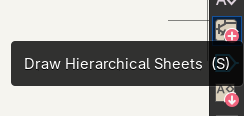
Now draw a rectangle and left click, a popup should appear:
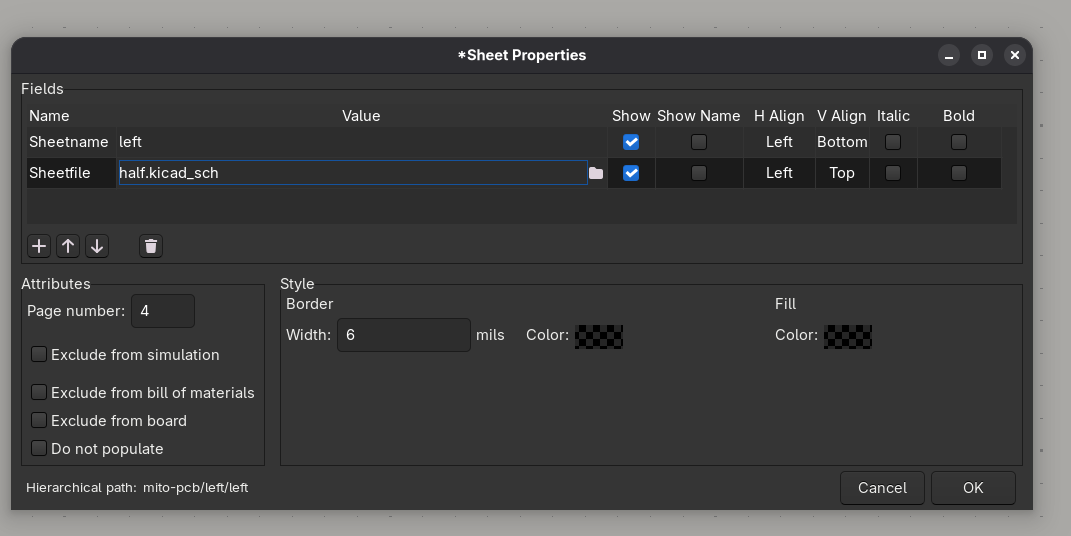
Change the Sheetname to left, and the Sheetfile to side.kicad_sch, and click ok
Now create another sheet, set Sheetfile to side.kicad_sch, but the Sheetname to right.
Your root sheet look something like this:
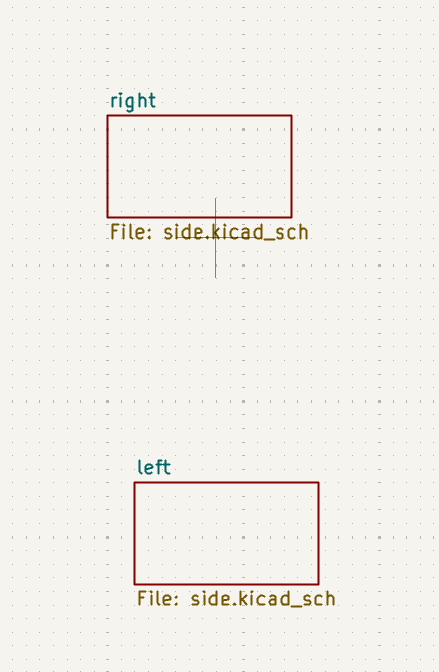
And your left side bar something like this:
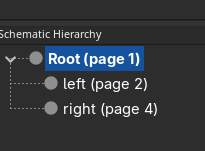
You can now double click on one of the sheet rectangle in the root sheet, or in the left side bar. You can now place down a switch for example, and navigate to the other sub/child sheet, you will notice that the switch that you placed down in the other sub sheet, is also in this sub sheet.


Circuitry
Now finally we can start to design our keyboard!!!
Add the XIAO-nRF52840-SMD symbol:
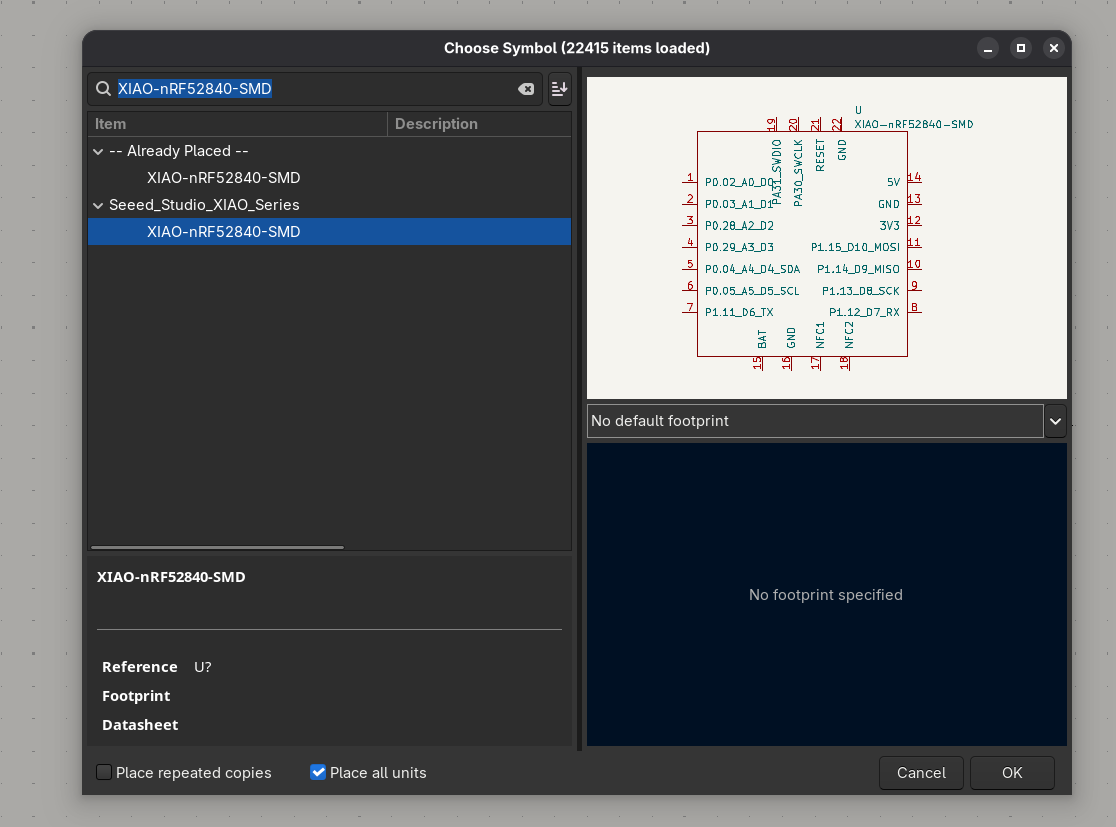
a switch SW_Push:
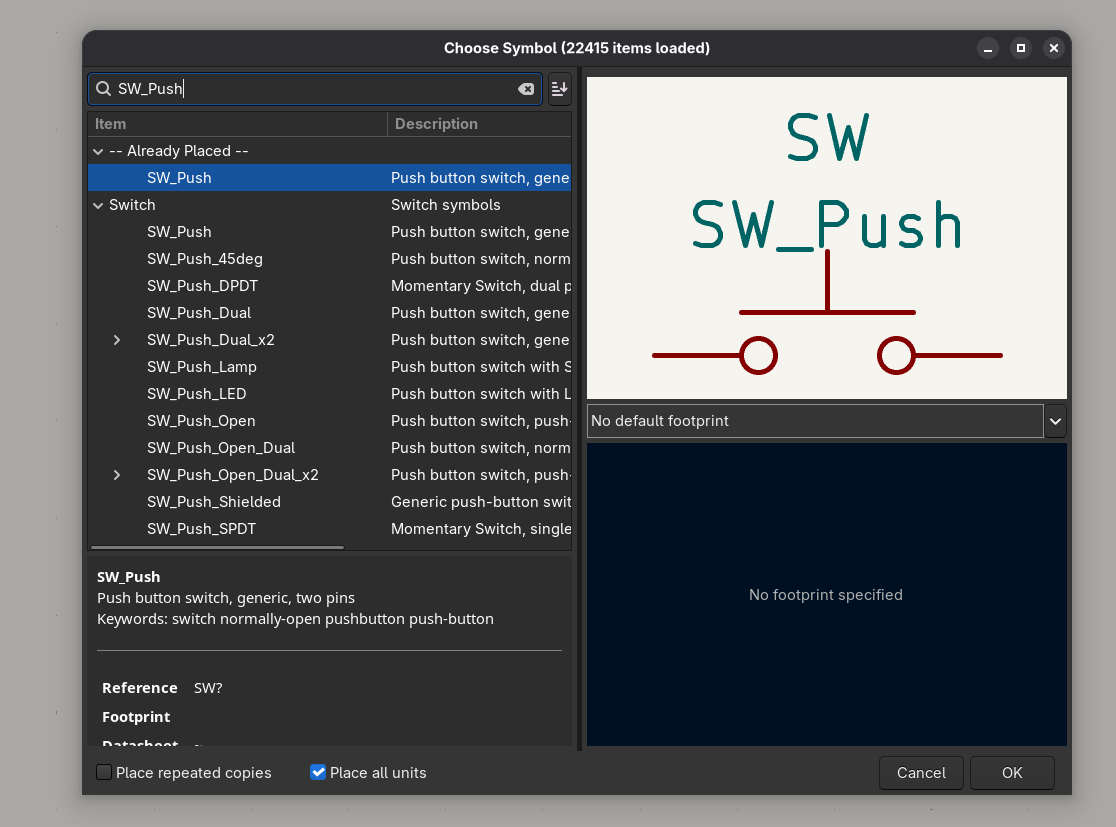
and a diode D (you will see later why we need this):
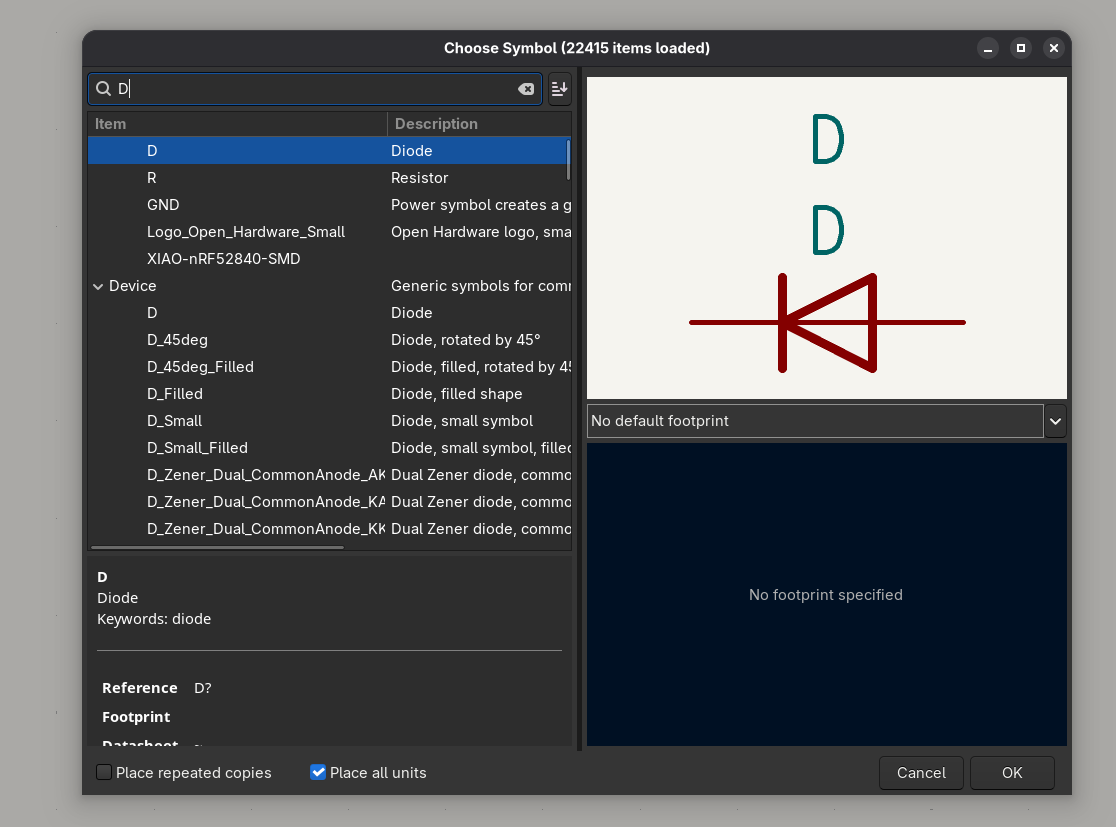
Keyboard Matrix
You may be wondering, why did we need to place down a diode???? You may also notice that the xiao doesn't have enough pins for a full half of a split keyboard. In comes the humble keyboard matrix, with it we only have to connect one pin per column and row, drastically reducing the number of pins needed for a keyboard.
The matrix works by giving power to each column one at a time, and checking which keys are pressed down in that column. We need diodes to prevent ghosting, where by pressing down one key, the keyboard detects more then one keypress. If you want you can read into keyboard matrixes here
For now all you need to know is that every key has its own diode, this is like one unit:
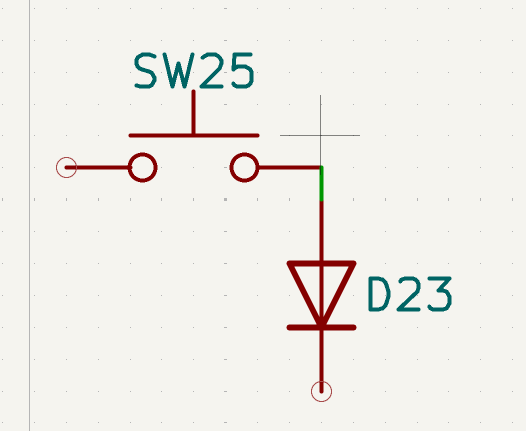
You can now make a matrix out of these units, you have to connect the switches to the columns, and the diodes to the rows. In this example in one row I only have one button, which is for my thumb:
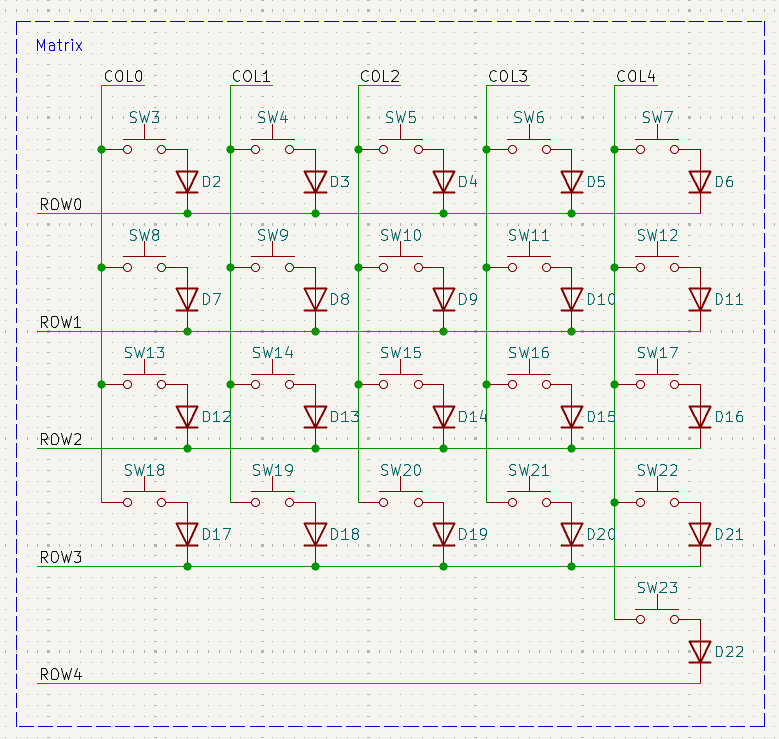
You may notice that there are labels, like COL0, COL1, etc. and ROW0 and ROW1. You can place these using the L shortcut or from the right sidebar. We can use labels to clean up our schematic, instead of routing from our xiao to the column, we just place a label with the same name at the column and one at the xiao's pin:
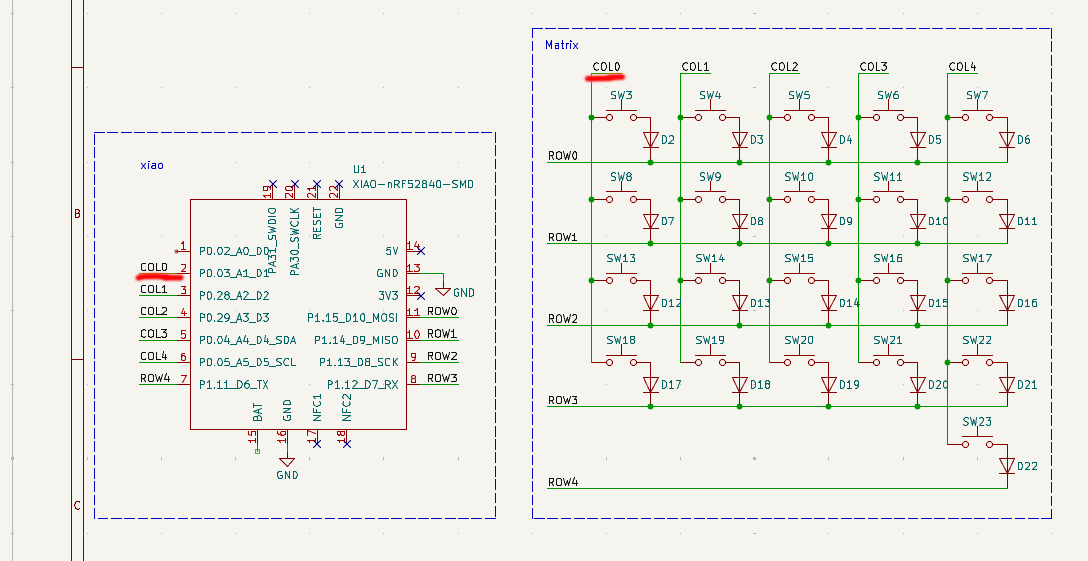
Battery
Adding a battery is really easy, because the xiao already has battery management built in. We need to add two pads where the battery can be connected to the pcb. In this case I used two test points, one for negative side of the battery(aka ground), and for the live side (vbat):
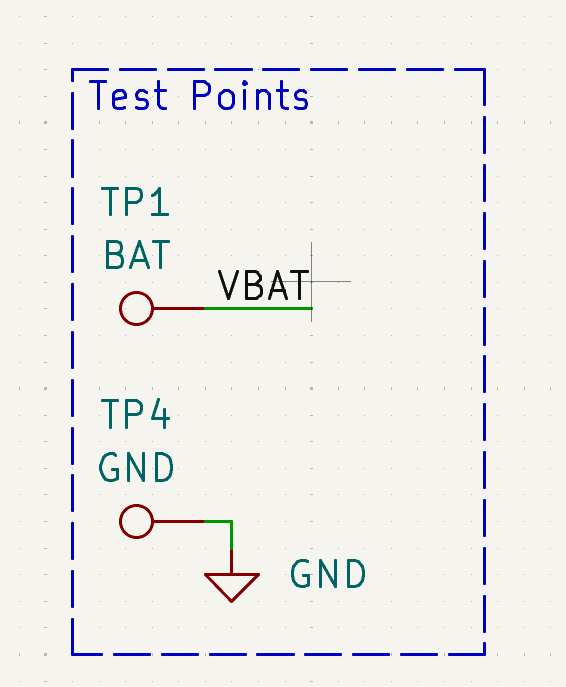
And then connected VBAT to the BAT pin of the xiao
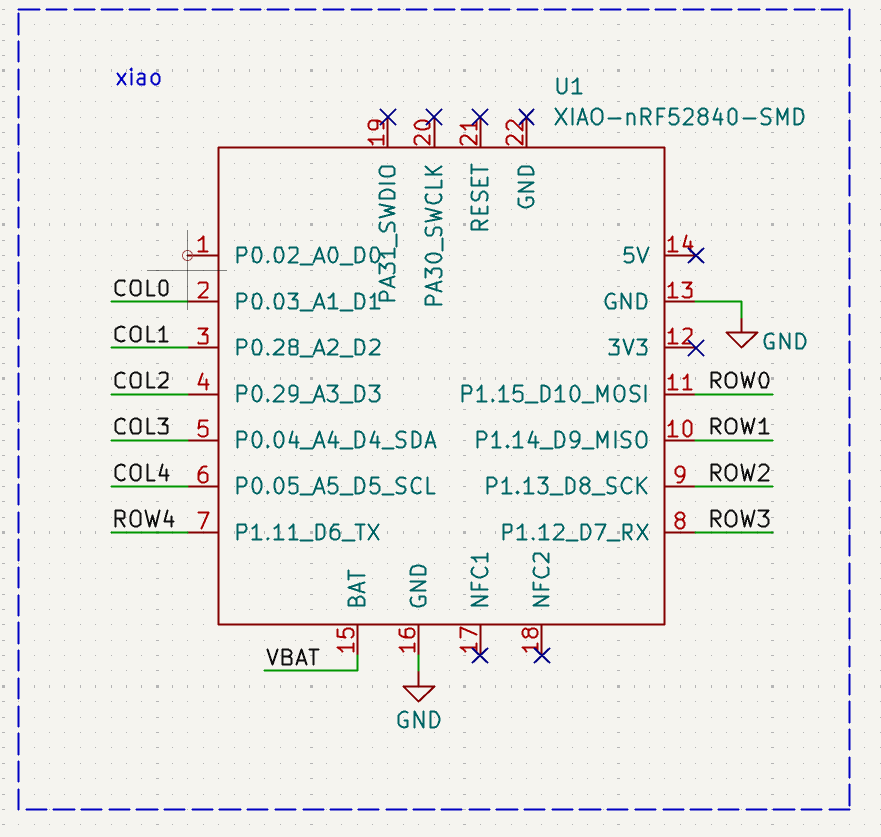
Sensing the battery voltage
This is an optional feature, that lets you see from you computer how much juice is left in your keyboards
We can achieve this by using a voltage divider, basically two resistors that divides the battery voltage by an amount, so we can measure it with our xiao. It looks like this, make sure to use these values for the resistors:
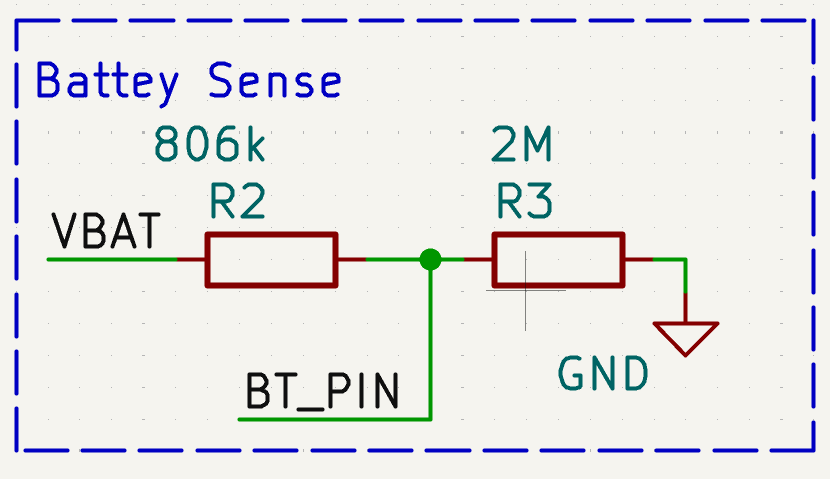
And then add the corresponding label (BT_PIN in our my case) to the xiao, make sure that it is an analogue pin (has A* ate the end):
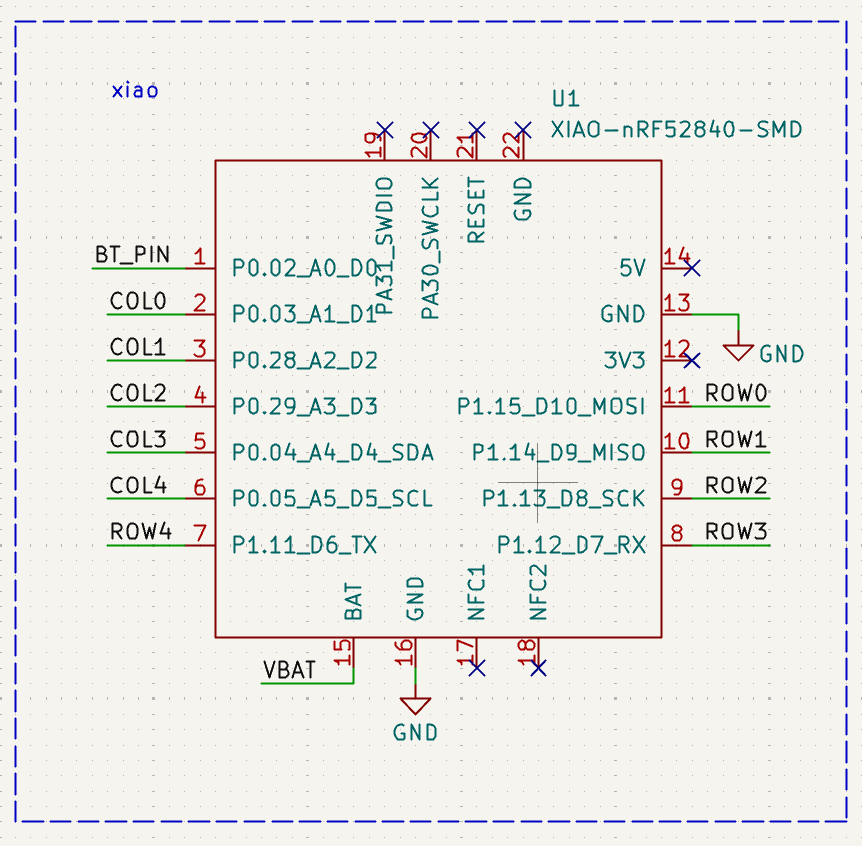
Mounting points
Add mounting point symbols to the left/right schematics
Mousebites
You should add three mounting points to the root sheet, we will assign mousebite footprints to these later on
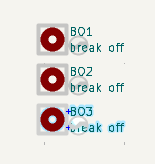
Footprints
Your done with you schematic!!!
Here is how mine looks:
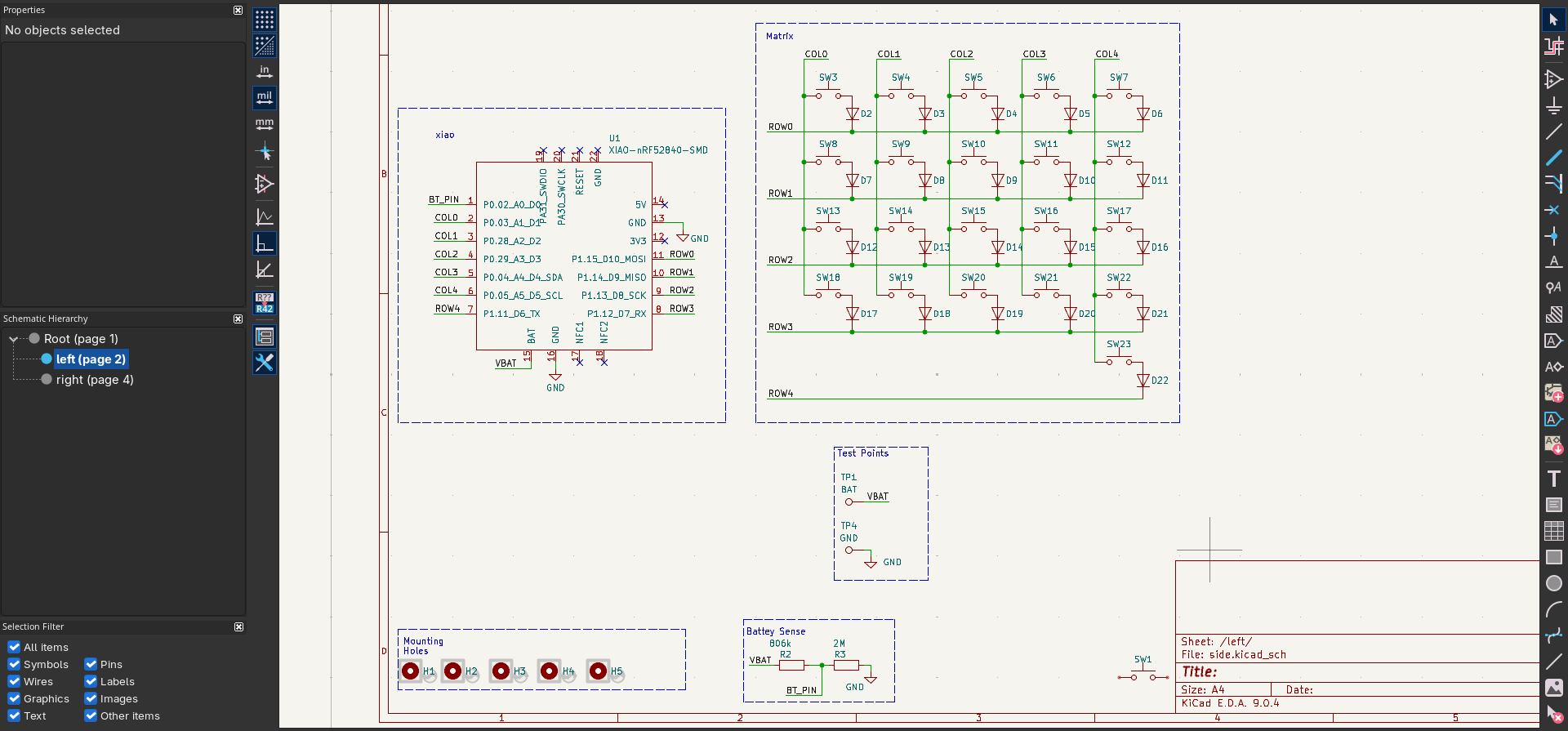
Now its time to assign some footprints! First, open the footprint assigner tool.
For the xiao assign the custom footprint that you downloaded earlier, its name should be modified-XIAO-nRF52840-SMD
For the buttons I used chalk hotswap sockets from marbastlib, but you can use any other keyswitch.
For the diodes I used 1N5819 which are SMD, so its a bit harder to solder, but I recommend them if you want a compact design, and don't want to place THT diodes not next to the switches,rather some other place on the PCB. The footprint for this is Diode_SMD:D_SOD-123
For the resistors I recommend Resistor_SMD:R_0805_2012Metric, but you can use any other package.
For the mousebites/breakoffs assign the panelization:mouse-bite-5mm-slot footprints
For the testpoints/battery pads I used TestPoint:TestPoint_Pad_D2.0mm, but you can use larger.
PCB
This part is basically the same as hackpad, so layout, then routing, except for the mousebites. So in this section I will give some tips for laying out a split keyboard
Here is my final pcb:
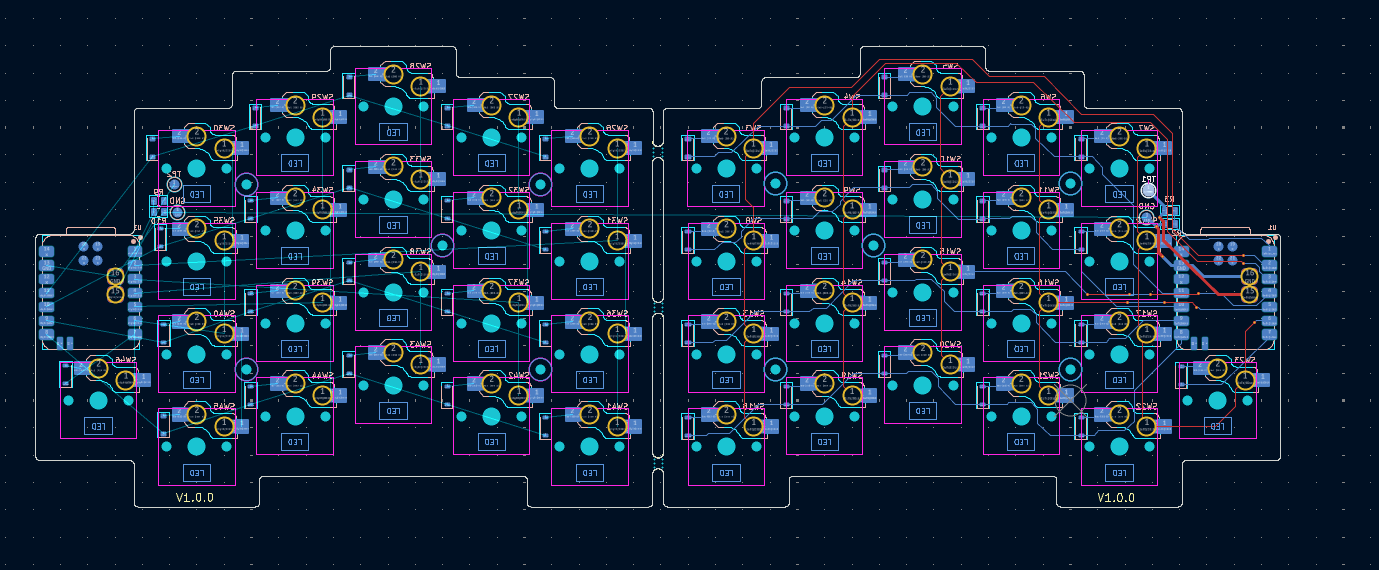
If the two half are symmetrical
then you should make the edge.cuts for one half, select all the edge.cuts, right click, and flip horizontal, and now you have two symmetrical edge.cuts
Mousebites layout
You should find two flat side of you two pcbs, place the mousebites there, and edit the edge cuts so it matches the mousebites footprint template:

Firmware
You will have to use the ZMK firmware, ZMK has excellent documentation and tutorials, and it explains it better then I could. It has a learning curve, but there is no getting around that